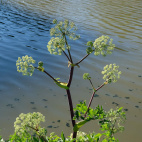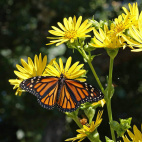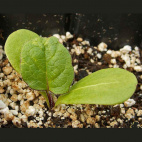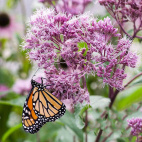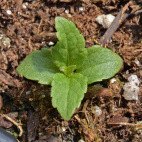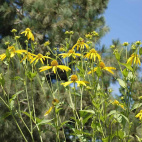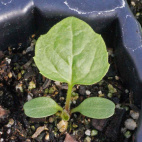Color
Availability
USDA Zone
Region
Type
Duration
Season
Germination
Soil
Sunlight
Height
Use
Narrow Your Search
Color
Availability
USDA Zone
Region
Type
Duration
Season
Germination
Soil
Sunlight
Height
Use
Wildflower Seeds - Northern Region
The Northern region is home to our Canadian friends in the eastern provinces, as well as the northern-most part of the Eastern US. This area is characterized by a long, cold winter with lots of snow, and a short humid summer that only lasts about 3 or 4 months. Most of the area is classified as a UDSA Growing Zone 4 or less, and the species that grow here have interesting ways to perpetuate themselves in spite of the short growing season. There are a lot of forests and wetlands in this region, so adequate moisture is hardly ever a problem. Look up your growing zone to make sure that the Northern wildflower seeds that you want to grow are winter hardy. Alternatively, just order annual flower seeds online so that the plant does not need to make it through the winter, but can reseed itself and come back from seed the next year.
-
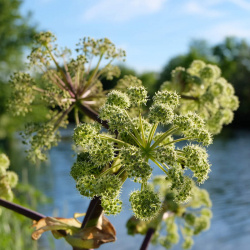 Angelica Seeds
Angelica atropurpurea
These showy, long-lasting blooms are taller than most other species in a wetland planting. Typically, it towers over the surrounding vegetation and produces the signature globe-like flowers that are hard to miss. The plant also grows in moist woodland areas.Quick View$3.48 Pkt - $12.65 / Oz
Angelica Seeds
Angelica atropurpurea
These showy, long-lasting blooms are taller than most other species in a wetland planting. Typically, it towers over the surrounding vegetation and produces the signature globe-like flowers that are hard to miss. The plant also grows in moist woodland areas.Quick View$3.48 Pkt - $12.65 / Oz -
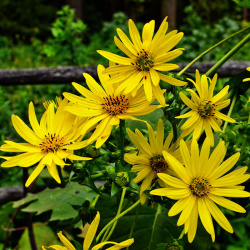 Cup Plant Seeds
Silphium perfoliatum
Cup plant seeds are perfect for attracting butterflies and other pollinators, the cup-like leaves of this native plant store rainwater. This tall perennial is a prevalent species in native seed mixes, especially if it is an area with more moisture.Quick View$3.48 Pkt - $18.77 / Oz
Cup Plant Seeds
Silphium perfoliatum
Cup plant seeds are perfect for attracting butterflies and other pollinators, the cup-like leaves of this native plant store rainwater. This tall perennial is a prevalent species in native seed mixes, especially if it is an area with more moisture.Quick View$3.48 Pkt - $18.77 / Oz -
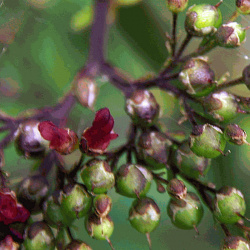 On Sale!
Late Figwort Seeds
Scrophularia marilandica
Though not usually noted for its appearance, this novel plant is rich in nectar. The small seed balls attract an abundance of butterflies, hummingbirds, and bees.Quick View$3.75 Pkt - $52.00 / Oz
On Sale!
Late Figwort Seeds
Scrophularia marilandica
Though not usually noted for its appearance, this novel plant is rich in nectar. The small seed balls attract an abundance of butterflies, hummingbirds, and bees.Quick View$3.75 Pkt - $52.00 / Oz -
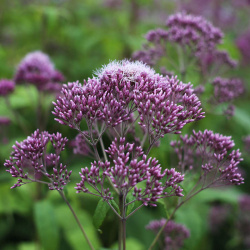 Sweet Joe Pye Weed Seeds
Eupatorium purpureum
This relative of Joe Pye Weed is taller, more colorful, and more fragrant than common Joe Pye Weed. Also, it does not need quite as much water, so it grows better in average garden soil. The name comes from an 18th century Native American who used this plant medicinally.Quick Viewx
Sweet Joe Pye Weed Seeds
Eupatorium purpureum
This relative of Joe Pye Weed is taller, more colorful, and more fragrant than common Joe Pye Weed. Also, it does not need quite as much water, so it grows better in average garden soil. The name comes from an 18th century Native American who used this plant medicinally.Quick ViewxSweet Joe Pye Weed Seeds
Eupatorium purpureum
This relative of Joe Pye Weed is taller, more colorful, and more fragrant than common Joe Pye Weed. Also, it does not need quite as much water, so it grows better in average garden soil. The name comes from an 18th century Native American who used this plant medicinally.
$3.48 Pkt - $32.00 / Oz -
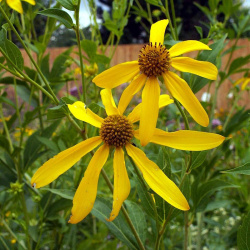 Wild Golden Glow Seeds
Rudbeckia laciniata
This perennial likes shade and moisture and will grow into a giant when happy. This native wild golden glow flower is used in many native woodland plantings and fills in the upper story of the planting.Quick View$3.48 Pkt - $18.77 / Oz
Wild Golden Glow Seeds
Rudbeckia laciniata
This perennial likes shade and moisture and will grow into a giant when happy. This native wild golden glow flower is used in many native woodland plantings and fills in the upper story of the planting.Quick View$3.48 Pkt - $18.77 / Oz
The Northern region is home to our Canadian friends in the eastern provinces, as well as the northern-most part of the Eastern US. This area is characterized by a long, cold winter with lots of snow, and a short humid summer that only lasts about 3 or 4 months. Most of the area is classified as a UDSA Growing Zone 4 or less, and the species that grow here have interesting ways to perpetuate themselves in spite of the short growing season. There are a lot of forests and wetlands in this region, so adequate moisture is hardly ever a problem. Look up your growing zone to make sure that the Northern wildflower seeds that you want to grow are winter hardy. Alternatively, just order annual flower seeds online so that the plant does not need to make it through the winter, but can reseed itself and come back from seed the next year.





